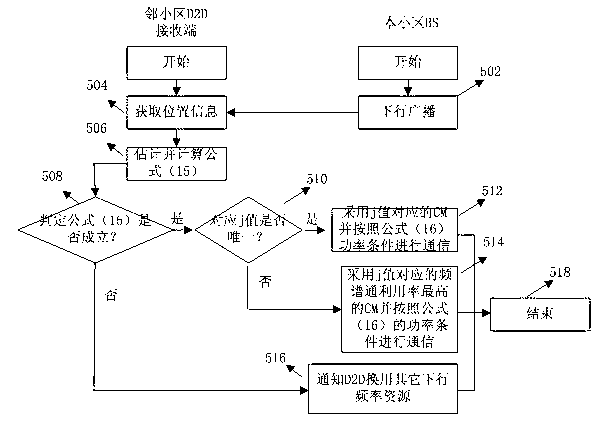Cross-layer design method for downlink resources in D2D (device-to-device) technology sharing system
A shared system and cross-layer design technology, applied in wireless communication, electrical components, etc., can solve complex interference problems
- Summary
- Abstract
- Description
- Claims
- Application Information
AI Technical Summary
Problems solved by technology
Method used
Image
Examples
Embodiment Construction
[0114] The present invention considers two system models, that is, Scenario A: Intra-cell D2D communication and cellular users multiplexing downlink resources and Scenario B: Inter-cell D2D communication and cellular users multiplexing downlink resources. Around resource allocation issues in different application scenarios.
[0115] around figure 1 For single-user scenarios, refer to image 3 , for the scenario where a single D2D communication pair and cellular users coexist in a cell, the specific implementation of the cross-layer design scheme is as follows:
[0116] In this scenario, there are mainly two types of interference, namely the interference from the BS to the D2D receiving end and the interference from the D2D sending end to the CU1. In order to control these two interferences and take into account the performance of CU1 and D2D users, the resource allocation scheme is as follows:
[0117] Step 302: First, the BS obtains location information about the cellular ...
PUM
 Login to View More
Login to View More Abstract
Description
Claims
Application Information
 Login to View More
Login to View More - R&D
- Intellectual Property
- Life Sciences
- Materials
- Tech Scout
- Unparalleled Data Quality
- Higher Quality Content
- 60% Fewer Hallucinations
Browse by: Latest US Patents, China's latest patents, Technical Efficacy Thesaurus, Application Domain, Technology Topic, Popular Technical Reports.
© 2025 PatSnap. All rights reserved.Legal|Privacy policy|Modern Slavery Act Transparency Statement|Sitemap|About US| Contact US: help@patsnap.com



